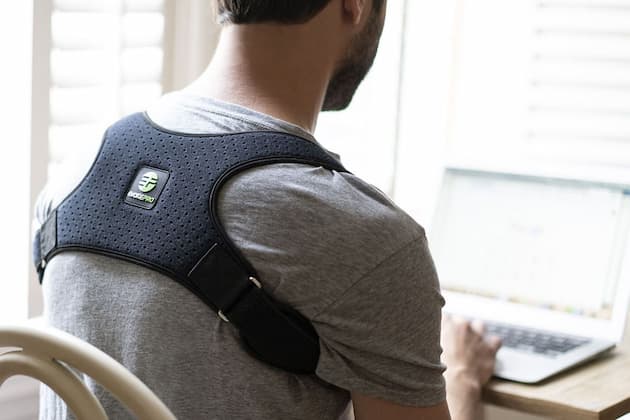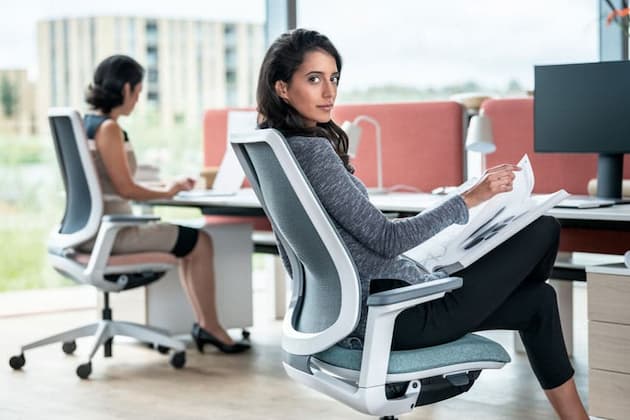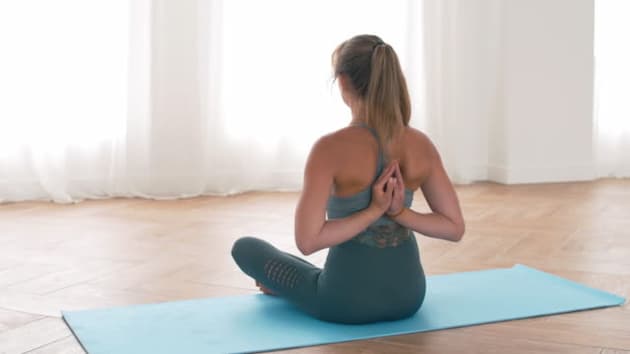Bad posture has become a common problem in modern society. Whether it’s the result of looking down at smartphones, sitting at a desk all day, or lounging on a couch, poor posture is affecting people of all ages, genders and backgrounds. Health experts are worried as bad posture can lead to back problems, neck pain, and other aggravating conditions such as poor balance, headaches and breathing difficulties.
Fortunately, there are things you can do to improve this condition. Here are some easy tips from ergonomic therapists to help you stop slouching.

source: pinterest.com
Wear a Back Brace
Proper posture means sitting up tall or standing with your shoulders pulled back and core engaged. While this is how your posture should be, sometimes, your body just does what it feels better in that moment to it. You can train yourself to adopt proper posture with a back brace. Also called posture correctors, these gadgets can remind you of how you’re positioning your body.
A back brace is a gentle but firm support back brace that allows the shoulders and arms to move and swing freely. This is a very important requirement when you’re sitting at your computer and need to reach for documents and files, working out in the gym and even relaxing watching TV. You’ll notice the brace effectiveness when you relax your shoulders and then feel them pulled back by the brace into the improved postural position, keeping your shoulders back. The end result will be you sitting straighter and standing taller!

source: verywellhealth.com
Nowadays, you can find a wide range of back braces for sale on the market, which means you should be able to find a great deal for your money. They are generally made of a unique elastic material that is padded where it counts for a soft, luxurious texture against your skin, especially under your arms where other braces can rub. This means that you can wear the brace directly on bare skin or under your clothes. There are a few features to keep in mind when looking for back braces for sale:
- Padded straps under the armpits for improved comfort
- Adjustable fastening tape for easier fitting and comfort
- Design that allows unrestricted movement
- Invisible and inconspicuous worn under clothes
- Completely washable for easy care
Wondering when to wear a back brace? They are perfect to wear while you’re at work, exercising and in a variety of other situations. And if you’re wondering ‘can I wear a back brace to bed’, keep in mind that this is not recommended. It’s important to note that back braces are not meant to be worn all the time. Excessive use could actually lead to muscle atrophy and weakening of your core. Wearing the brace for about 2 hours a day is enough to achieve positive results.
Invest in an Ergonomic Work Chair
If you work seated most of the day, having an ergonomic work chair is not a luxury – it’s a necessity. Sitting for long periods in a traditional chair can put an undue strain on your spine, and over time can lead to bad posture whilst increasing your susceptibility to back injuries. Ergonomic chairs are fully adjustable to align with your height and workstation, ensuring you remain in the correct sitting position.
Ergonomic chairs are typically full length extending from your shoulder to seat. There is a section in the lower part of the back that curves slightly to match the natural curve in your lumbar spine. Adjustable armrests enable your arms to hang naturally at your side, allowing you to use your keyboard and mouse without causing muscle fatigue in the shoulders and arms. Some chair models have backs that can move back and forward to shorten the deep of the seat. This helps prevent the front edge from cutting into the back of your knees.

source: urban-office.com
But in order to be effective, you need to buy the right chair. When shopping for an ergonomic work chair, ask yourself the following questions:
- Does the chair work with your desk or workstation? This’s an important consideration as not all jobs can use the same type of ergonomic chair;
- Is the chair compatible with your height? The general rule of thumb for getting the proper seat height is that it should be a quarter of your total height. However, people have different torsos and legs;
- Does the chair fit your body comfortably? The way your body’s weight is distributed can also affect the type of chair that you get. The right chair shouldn’t put a strain on one part of your body in an effort of relieving another.
Exercise
In addition to improving your health, exercise can also improve your posture. Proper posture can be promoted by combining different exercise routines to strengthen your body and maintain proper alignment.
Yoga is one exercise that offers a great opportunity to correct your posture. It can be practised anywhere and all you need is a yoga mat. Consistent practice will result in improved posture and an increased sense of balance, with pelvis, shoulders and head in proper alignment.

source: pinterest.com
Walking and running can help build bone strength. This can be especially beneficial for post-menopausal women who may develop severe postural changes from osteoporosis. Aerobic exercise helps stabilize the spine to keep you upright when you move and core stability exercises help strengthen abdominal and lower back muscle that connects to the spine.



